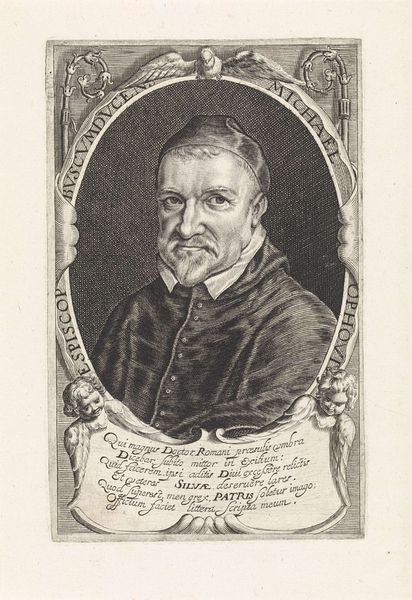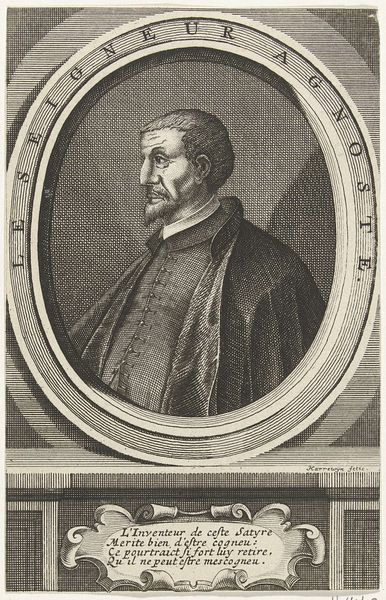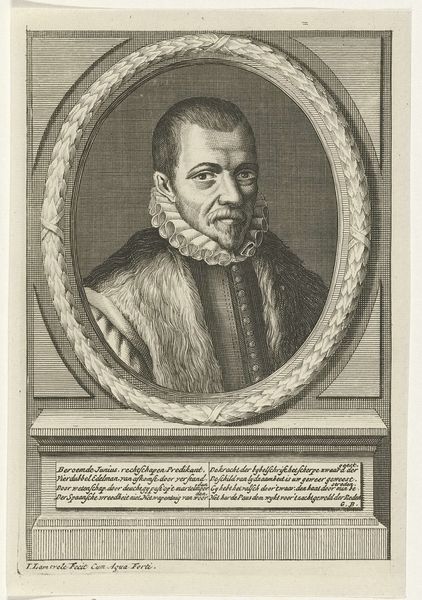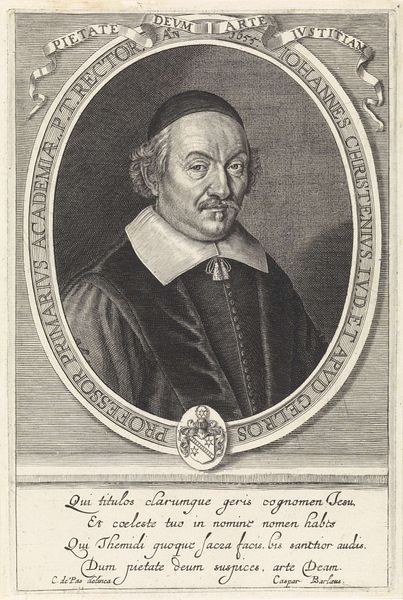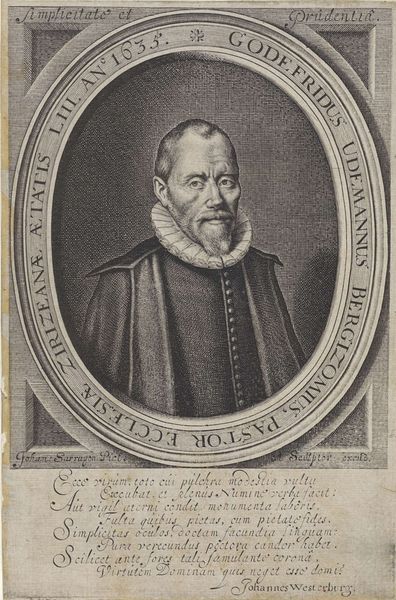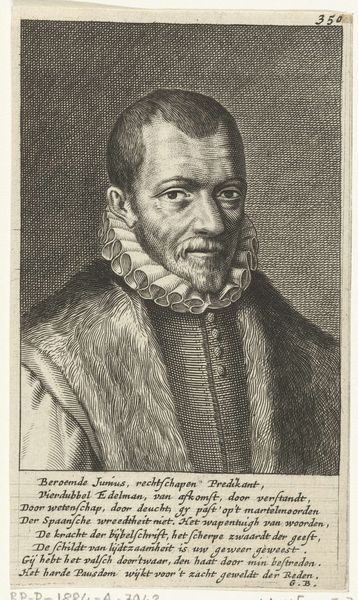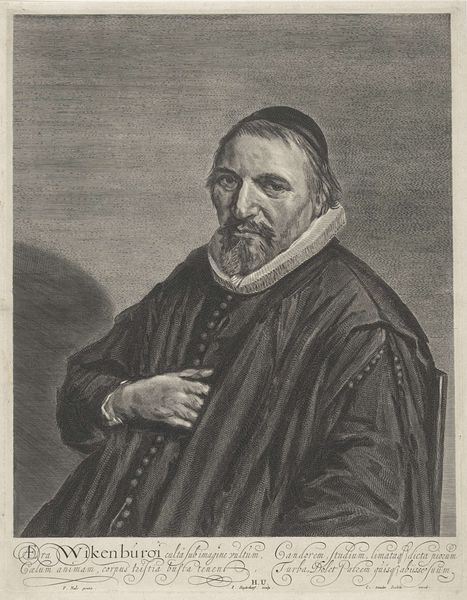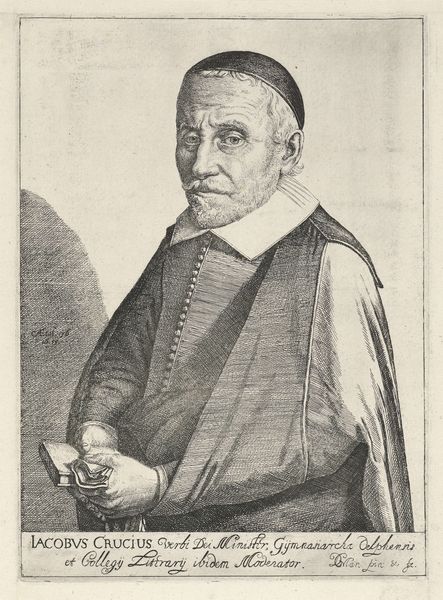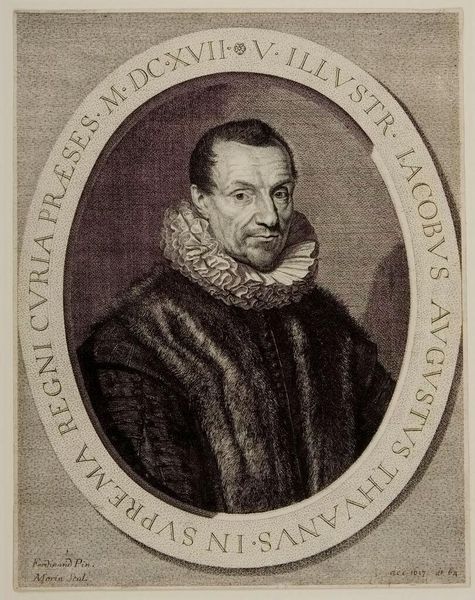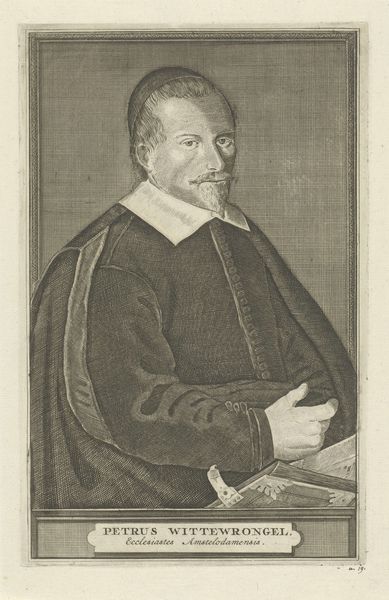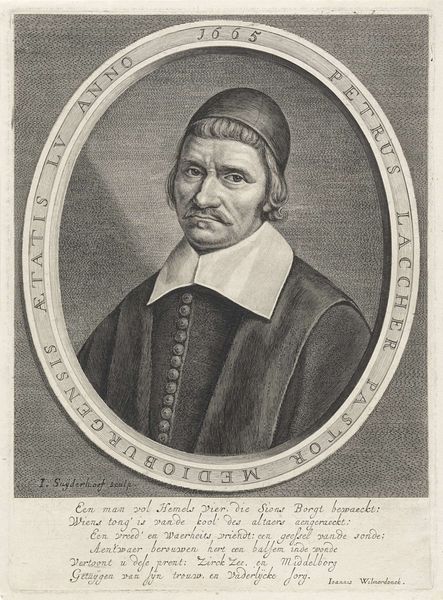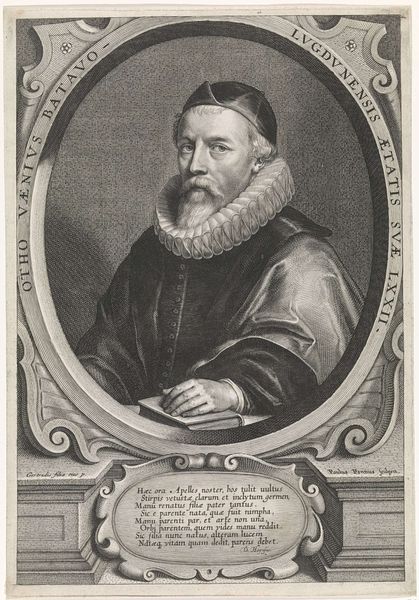
metal, paper, ink, engraving
#
portrait
#
baroque
#
dutch-golden-age
#
metal
#
old engraving style
#
figuration
#
paper
#
historical photography
#
ink
#
19th century
#
line
#
engraving
Dimensions: height 282 mm, width 231 mm, height 68 mm, width 232 mm
Copyright: Rijks Museum: Open Domain
Editor: This is "Portret van Johannes Koetsius," an engraving by Jonas Suyderhoef, dating somewhere between 1646 and 1686. The fine lines creating light and shadow are striking, but what I find interesting is the subject holding a crucifix; it lends a somber, almost austere mood to the piece. How do you interpret this work? Curator: Well, it is important to remember that portraits such as this were often tools to communicate social standing and identity within a very specific cultural and religious framework. The cross in Koetsius’s hand would not have been simply a symbol of personal faith, but also an affirmation of his role, perhaps, as a figure of religious or moral authority. Consider how, during the Dutch Golden Age, religious identity intersected with civic duty. How does that awareness change the way we view the portrait? Editor: That makes me consider the inscriptions that surround the portrait. Do you think they offer further insights into understanding this historical context and his personal identity? Curator: Absolutely. The text probably speaks directly to Koetsius’ virtues and accomplishments. Understanding those phrases within the context of 17th-century Dutch society allows us to peel back layers of meaning. We are then encouraged to question what virtues were valued, who was permitted to express them, and whose stories were left unrecorded. Editor: I hadn’t considered the text in that way. I see now that understanding the context is key to unlocking layers of meaning within the piece and appreciating it as a record of cultural values, not simply a depiction of an individual. Curator: Exactly. And that is precisely where the richness of art history lies – not just in observing, but in questioning the narrative.
Comments
No comments
Be the first to comment and join the conversation on the ultimate creative platform.
